The Eastern State Penitentiary in the city of Philadelphia, Pennsylvania, is called the first true penitentiary institution and one of the most famous of its kind in the world. Designed by renowned architect John Haviland, the facility opened on October 25, 1829, and served its designted purpose for over 140 years. Today, the prison is a museum and a national historic landmark. Read more at philadelphia-future.
The prison that became a model for hundreds of similar institutions
John Haviland devised the construction plan for a new prison based on the design of prisons and asylums built in England and Ireland since the 1780s. The British architect made the Philadelphia prison in a neo-Gothic style to instill fear in those who would only think of committing crimes. Upon completion, this prison became the largest and most expensive public structure of its time in the United States. It also served as a model for hundreds of prisons worldwide, particularly with its radial construction plan and system of solitary cells.
The facility implemented the revolutionary Pennsylvania system, which involved solitary confinement as a form of rehabilitation. Prison guards were required to visit each prisoner several times a day. For example, under the more popular New York System, prisoners were forced to work together in silence and could be physically punished.
The entire Eastern State Penitentiary complex consisted of long cell blocks that branched out like rays from a central tower, where complete surveillance of the prison was conducted.
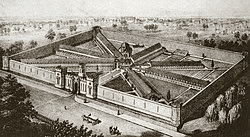
The prison premises were designed to make people feel as if they were in a church. With the permission of the guards, the prisoners could leave the solitary cells through metal doors that were also covered with wooden ones to absorb any sound. The doors were small in size. It was done to minimize the risk of an attack on the guard when they exited, as the prisoner could not fully straighten up. Some say that this way, they bowed upon entering and exiting (hinting at repentance and the religious mission of the institution). Upon leaving the cell, each prisoner had to put a hood up so that others could not recognize them. In the concrete cells, there was a single window symbolizing the “Eye of God” that always watched over the prisoners. There were separate training grounds where they could exercise. These areas had high walls to prevent prisoners from communicating, and their exercise times were scheduled to ensure that no one met each other. Inmates were even allowed to keep pets in their sports yards.
Regular tortures were a common practice…
The modern cells were equipped with faucets with running water, a toilet with a flush and central heating pipes. Rectangular openings were made in the walls of the cells to give food and materials for work to the prisoners, as well as to keep an eye on them. To reduce communication between inmates and the exchange of messages, the architect designed individual toilets in the cells with separate pipes leading to central sewerage. However, the prisoners still managed to interact, so the system was redesigned several times.
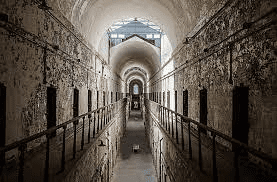
One of the two-story cell blocks
Initially, the prison project included 7 single-story cell blocks. But when only the third was built, all existing jails were already occupied. Therefore, the subsequent blocks were made two-story. Some blocks were built very hastily to quickly accommodate new prisoners. There were cells for criminals with the worst behavior. An individual treatment system was applied to them. After the construction was completed, the facility could accommodate 450 people.
Most of the first inmates served time in the Eastern prison for petty crimes like robberies, thefts and so on. Initially, they served two-year sentences. According to the proponents of the “Pennsylvania system,” the jail was intended not to punish but to encourage spiritual reflection and the desire for change and repentance. However, it is known that in reality, the guards implemented systematic physical and psychological torture for various infractions (doused prisoners with cold water outdoors in winter, tightly tied them to chairs for several days and placed them in an underground cell called “The Hole” without light, contact and almost no food for two weeks).
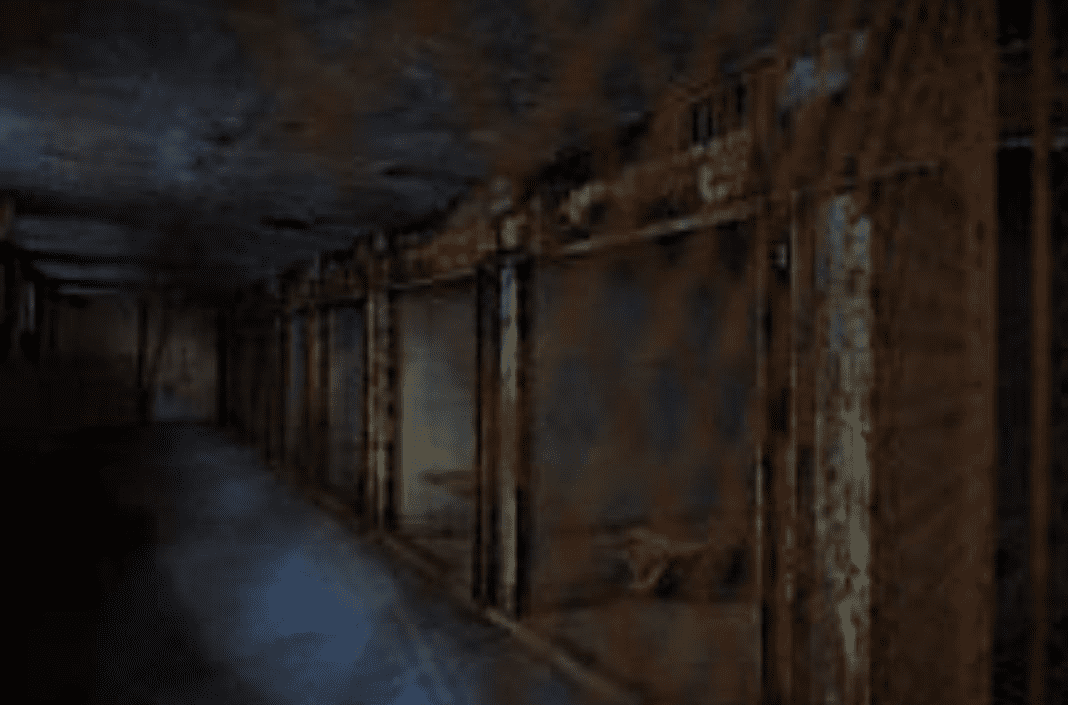
Death row
Life sentence even for a dog
The most famous criminals who served sentences in this institution were the globally notorious gangster Al Capone, Willie Sutton, a bank robber, James Bruno (or Big Joe) and several men from his family (for alleged murder before a suspended sentence).
The history of the prison is filled with a huge number of legendary stories. For example, it is said that in 1924, Pennsylvania Governor Gifford Pinchot sentenced his own dog named Pep to life imprisonment. The so-called “killer dog” was put in jail for allegedly killing the governor’s wife’s favorite cat. Prison documents indicate that the dog was assigned a prisoner number, which can be seen in a photograph. However, some media reported that the official donated his dog to the prison to boost the morale of the inmates.
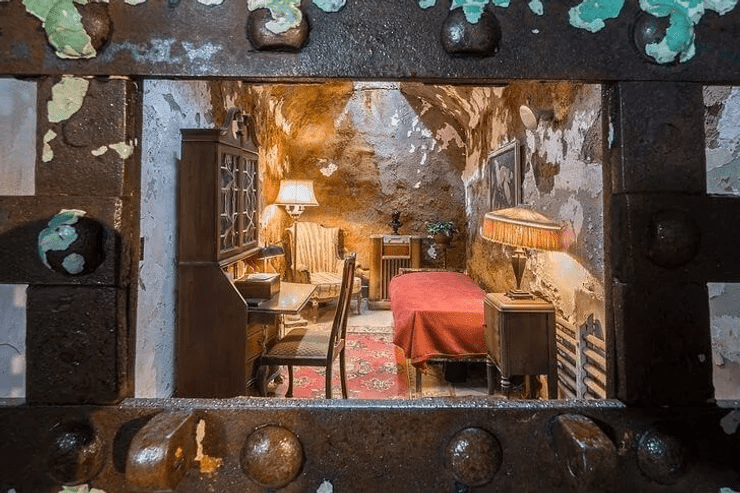
Al Capone’s cell
In 1945, a great escape took place. 12 prisoners, including Willie Sutton, escaped through a 97-foot (30-meter) tunnel that had been dug over a long period of time. Interestingly, another 30 unfinished escape tunnels were discovered during subsequent repair works.
Ultimately, the solitary confinement system collapsed because the prison became too overcrowded to hold inmates in isolation. By 1913, the prison completely moved away from the solitary system and operated as a facility for group prisoner detention until its closure.
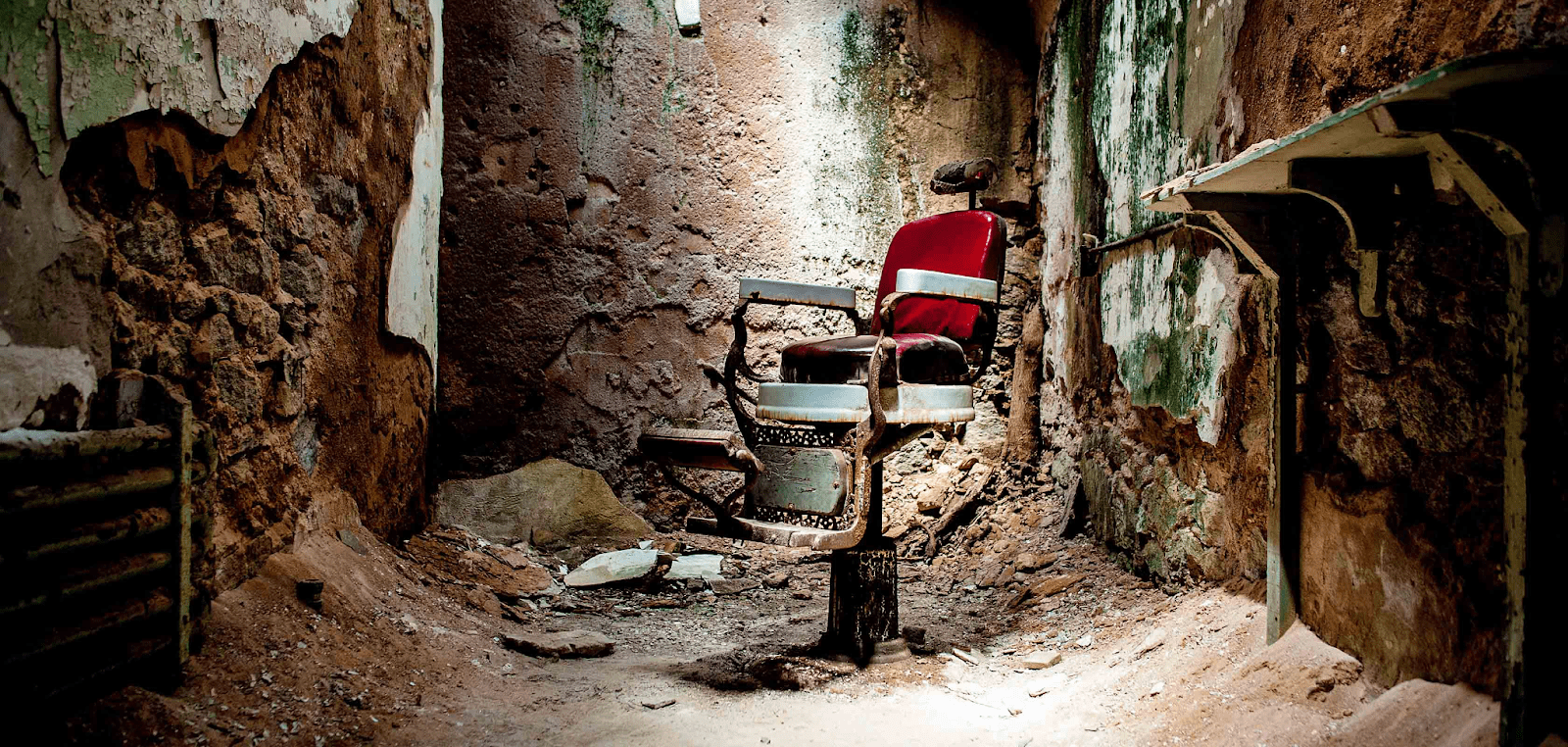
It used to be a barber shop
Even in the 19th century, the prison already became not only one of the largest public projects of the early republic but also a tourist destination. It is known that the English writer Charles Dickens and the French statesman and historian Alexis de Tocqueville visited it. Visitors interacted with prisoners in their cells. However, meetings with family or friends were prohibited for the inmates.
The prison became a museum
Several years before its closure, the institution developed a progressive group therapy program for the inmates. The groups were led by therapists. Prisoners voluntarily joined the program, which became quite successful.
The prison was closed in 1971. The prisoners and staff were transferred to other facilities. The city acquired the property of the institution with the intention of redeveloping it. There were speculations that the prison could become a shopping center or a residential complex. But by the end of the 1980s, the prison had been overtaken by a forest, which grew on the walls and even inside the cells. Also, homeless cats lived there.
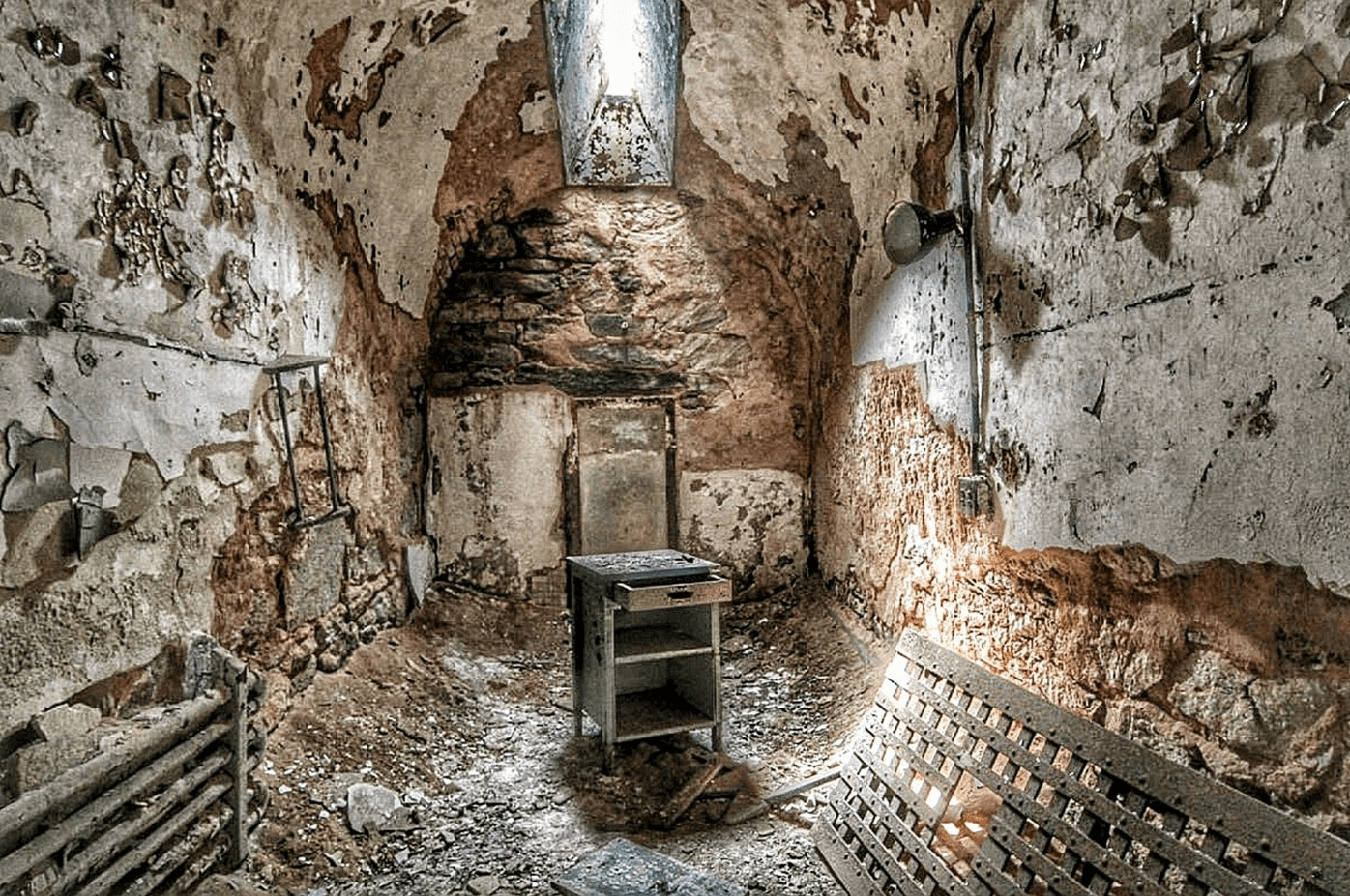
Remains of another “apartment”
Until 1991, no major repairs or restoration work had been carried out in the prison. However, after receiving funding, everything changed. In 1994, the institution opened historical tours to the public. Numerous interesting projects have been implemented for the restoration of the building and for the events held there. World Monuments Fund included the prison in the list of cultural heritage sites under threat of disappearance. Since 1965, the prison has been a historical landmark.
The Eastern State Penitentiary in Philadelphia is open for tourist visits 7 days a week as a museum. Impressive guided tours and audio tours are offered here. Tourists can visit several cells, but most are closed. Due to its creepy appearance, dismaying atmosphere and history, the abandoned prison is often used as a set for TV programs, shows, music videos, ghost-themed films, as well as detective, feature and documentary movies and even for paranormal investigations. The famous prison is mentioned in books and is used for various events.
The museum-prison also houses many valuable art exhibits. For example, there are ghost cats. In 1971, when the institution closed, a group of cats lived on its grounds. They were later caught and sterilized, after which they stopped reproducing. Artist Linda Brenner created 39 cat sculptures that “surround” the structure. The animals are made from a slowly dissolving material as an illustration of the natural decay of all living things. Many other artists have contributed to the creation of art exhibits in the institution.
The establishment is visited by up to 220,000 people annually.